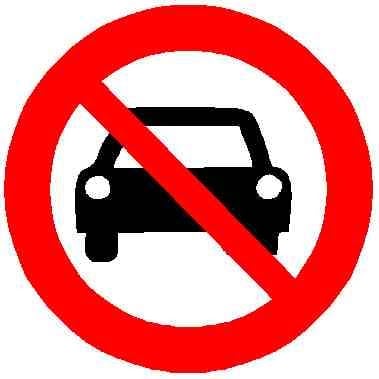Singapore gets a lot of things right, including this.
One thing I like about their public transport is the “distance fare” system, where buses and MRT are integrated into the same payment system, so if you have a journey that consists of bus->train->bus it’ll only cost you the same as if there were a single bus that did that same total route. The most it’s possible to pay for the longest trip from one end of the island to the other is about US$2.30, and most shorter journeys are barely a dollar.
I love Singapore public transit. I love how they tell you how long it will take to walk to another station, how they have the lines on the station floor that you can follow, how their trains are long and open with no doors between cars, how they have PSA signs reminding people how to be polite to others. I could go on.
In Germany and Austria, it’s standard for all public transport to be part of an integrated fare system. If you buy a multi-day ticket for Vienna or Berlin, you can take all trains, metros, buses, trams for its duration of validity.
And as soon as you leave your fare system everything changes.
Nowadays there are country-wide passes in both countries (Deutschlandticket, Klimaticket).
Yes but if you do not have one it can become super complicated.
We have the same system in Switzerland. All countries with civilised public transport do.
That’s 2.3 more pricier than my daily drive. They gotta do better. I recall Mexico had their metro at much lower prices that made sense.
I just had a quick look at I think if you adjust for the local economy, they’re pretty much a muchness. A typical journey on the S’pore MRT is around a dollar, a typical journey on the MC Metro is $0.27. Average salary in Singapore is about 4-5 times Mexico City.
Also, if your daily drive only costs $1, it’s not going to get you from one end of Singapore to the other, unless you’re averaging 100mpg and also ignoring all forms of wear and tear, servicing, insurance, depreciation, initial purchase and taxes.
Singapore is quite wealthy. A dollar doesn’t even register for them, it might as well be free. A dollar to them is like 5 pesos to you.
Oh you’re right! Even when Singapore is such a tiny country compared to Mexico, it makes like 10 times per capita higher, although in total Mexico makes about three times more GDP. So it totally makes sense that locally they should have much better standards of living, communication and transportation.
But looks like the metro fares are the same, both around 0.01 to 0.03% GDP. In the USA fare is closer to 0.05% relative to GDP. For me, north of seattle my hybrid car is much less expensive and quicker to use than public transport. However in Seattle city proper using a car is extremely stupid. There’s too much traffic and clearly no parking. Plus the bus and light rail are easy to reach. Yet somehow every morning the freeway into Seattle is packed to the rim. Housing near jobs is too expensive. So people trade housing for ease of mobility.
I’ll have to figure out how much pesos are right now.
Oh I didn’t even realize how tiny Singapore is:
Wow, Washington state is like 200+ times bigger. Looking at the amount of land left for anything that is plants I would expect a stable or shrinking population. There’s no way that population could have kids and give them housing without an equal amount of deaths. Yeah that’s a hard to look at situation. I hope the planet does start having a shrinking human population.
Ah yes, the birth rate in Singapore is 0.97 so the population is shrinking quickly and their percentage of old age around 65 years is 20% and growing at 13% per year. Within a decade the original population would have been diluted. The general population is unfortunately growing due to migration, which is good. Migration should add new genes to lift up the birth rate. But running out of space and having a 1% migration increase, that’s tough. But now it makes sense. Singapore is rich because of the newcomers. The USA will one day learn that migration is or can be good.
The USA being so anti-immigration is very ironic, since the country is literally made up of immigrants.
Yup. It’s both sad and crazy.
But, there’s good public transport that’s cheap and cheap abundant taxis too. The whole country is the size of a small city.
Yeah, that’s the catch, isn’t it? It’s a small, densely packed area, which is where public transport really works.
It really doesn’t need to be Singapore dense for public transport to work. It just needs to be clean, reliable, easy to use, and reasonably comprehensive. What it really requires is competent planning and funding.
Even developed world suburbs can have decent public transport (as long as you’re willing to walk 10 mins) and if more did, fewer people would feel the need to own or use their cars.
Yeah. If one ever follow Not Just Bike they would know that the size of the place and the density play less of a role of having good public transport infrastructure, because once a train station is build, the surrounding area will also start to develop because developer love these kind of spot. It’s really just how the town/city is being developed and what the infrastructure they have to accommodate the public transport/micromobility.
Density helps but it’s not a big factor in building public transport. Case in point, NYC is comparible in land size and population density, yet it doesn’t come close to Singapore’s transport system.
Policy and politics is what drives public transport. They want it, so they have it.
it’s been like this for quite a few decades i think, the certificate to own a car, last year i checked, it’s about 100k sgd. They also taxed a lot on car price.
All that to fund public transport, which is probably the best in Asia. Owning a car is no longer a need for them. I went there twice, and both time i only need to have a combination of walking, bus, and train.
The first time i went there from Malaysia, i went there by bus and was dropped in Woodland checkpoint because i have absolutely no idea where to go after going through custom, and i was stranded. It took just a bit of google-mapping to know where to take a bus and train, and just like that i’m at my hotel for check in.
Some said they’re able to be that good because they’re city state, but i wish i have good train and bus service in my city.
The results? About 11 cars per 100 people in Singapore (2024)—versus ~55 per 100 in the European Union (2023) and roughly 85 motor vehicles per 100 people in the United States (2022). (…)
Over the last decade, Singapore has added new MRT lines, over 1,000 new buses, and 200 additional trains. Today, 80% of households are within a 10-minute walk of a train station.
Today, 80% of households are within a 10-minute walk of a train station.
That might be a challenge in most of Europe, outside of the biggest cities.
This is true. And in sparsely populated areas, impossible.
That’s why you have the 80% figure and not 100%.
In the EU, 76% of the population live in urban regions. That’s 76% where it’s really easy to have people live within 10 minutes of public transport.
In cities like Vienna, that figure is already close to 100%.
And in sparsely populated areas, impossible.
Luckily, by definition, not a lot of people live in sparsely populated areas. And also luckily, the figure we are talking about is “percentage of the population”, not “percentage of the land area”.
In the EU, 76% of the population live in urban regions.
Fun fact: in the US, the percentage is even higher, at 80%.
Something to remember next time some troll tries to claim that EU-style public transit can’t work in the US because we’re too spread out.
Why are you ignoring the qualifiers already provided by me and the previous commenter?
Two qualifiers that just don’t make sense in the context.
?? You basically just repeated them.
Do you think I’m against more trains or something?
99% of populated Switzerland is within 10 minutes walking distance of public transport. 95% within 5 minutes.
We are saying trains, not public transportation in general. Still that number is either made up or extremely misleading. Would like to be corrected with a source of course
With trains the number is much lower, obviously. We don’t run trains to every mountain village - but to more than you might think. But for any form of public transport, the number is accurate. I welcome you to visit our country and see for yourself.
I did multiple times. Still you’re sharing an observation, a made up statistic.
Well then you’ve experienced it yourself. Perhaps the following will help illustrate the point: there are 2’115 communes (towns and cities) in Switzerland, but 1’772 train stations, and 23’080 bus stops. And since you’ve seen how small our cities are, you know there aren’t 20’000 in the capital and then nothing elsewehere.
Nothing here says 99% population with less than 10 min to public transportation. That’s what you, based on your observation, made up.
You’re happy with the public transportation there? Good ! That doesn’t change anything regarding the original comparison of train stations in Singapore or that you’re taking percentages out of your imagination.
is now considered a luxury
Has always been
I don’t know, most of the homeless in my area have cars and semi live in them. You can’t walk or bike here, there’s no public transportation, and the winters are brutal. You can’t live without a car or someone willing to drive you. When people are struggling to pay their bills, they’ll lose their house before they lose their car.
I think you may have misinterpreted what I said.
I was correcting the title:
In Singapore, owning even a junk car
is nowhas always been considered a luxuryYeah I didn’t apply it to the title, it seemed like a broader statement. Thanks for the clarification.
[…]because owning a car in this city-state isn’t just about buying the vehicle. You also need to purchase a Certificate of Entitlement (COE)—essentially, a government-issued permit that gives you the right to own a car for ten years. And the current cost? Recent COE premiums for cars have exceeded S$120,000 (≈€82,000).¹ Add the car itself, and suddenly a basic sedan can set you back well over €100,000.
Damn, that’s almost € 7 000 per month - I don’t even earn that much before taxes.
In a city state like Singapore it’s the perfect way to finance public transport.
edit: oops, 700. Thanks gloog.
That says it’s for 10 years, so “only” 1/10th of that each month. Still very much a thing only businesses and very well off people can realistically afford though.
oops & thanks
for ten years
That’s still ~ €700/month
More places need a system like this, cause fuck cars, but I don’t like how this gate-keeps for only the wealthy. It would be nice if there was an inclusive system for people who really need one and pubic transit isn’t a good option. Do they have cheap carshare rentals like Car2Go or similar? Maybe if it was a lottery that prioritized those with disabilties and accessibility needs that Transit, E-bikes Etc doesn’t suffice for.
but I don’t like how this gate-keeps for only the wealthy
Agreed
It would be nice if there was an inclusive system for people who really need one and pubic transit isn’t a good option
I’m pretty sure public transit IS a good option in Singapore, because it’s so dense and wealthy. An excellent transit system is a prerequisite for making cars unavailable for most people, I’d say.
Do they have cheap carshare rentals like Car2Go or similar
Google gives up hourly car rentals, idk if they have ones like here in Estonia where you just walk up to a Bolt Drive car and unlock it via the app.
Maybe if it was a lottery that prioritized those with disabilties and accessibility needs that Transit, E-bikes Etc doesn’t suffice for.
Hmm, well, if it’s a lottery, that means people with disabilities still aren’t guaranteed cars. On the other hand, if you give everyone with disabilities the ability to easily buy a car - everyone’s going to have a disability.
It is.
Good.






